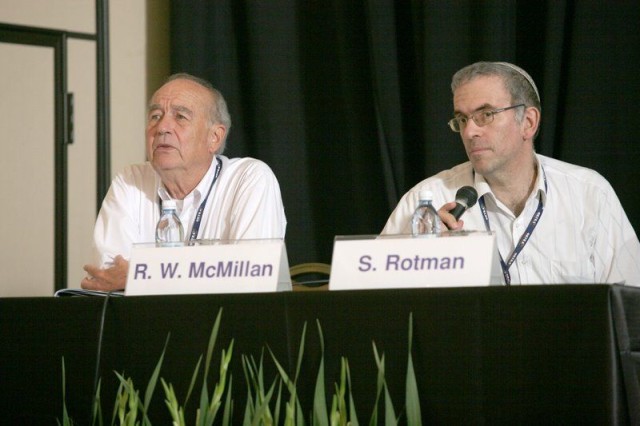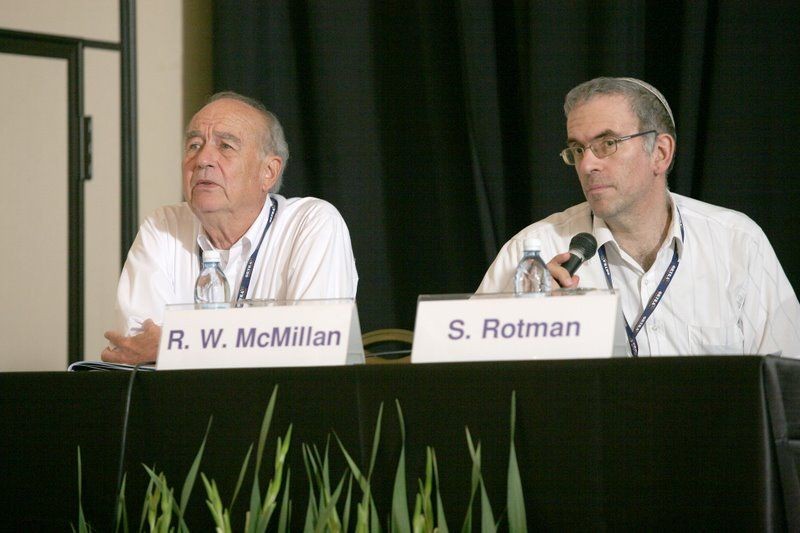HUNTSVILLE, Ala. - Robert W. McMillan, Ph.D., senior research scientist for sensor applications in the Technology Center of U.S. Army Space and Missile Defense Command/Army Forces Strategic Command, can celebrate a career full of technical achievements as he prepares to take the next step in life.
"This is a great place to work. I love it," McMillan said. "I am grateful for my time here at SMDC."
McMillan also reflected on his early days and how he got to where he is today.
"I was always interested in technical things in high school and in my earlier years," McMillan said. "After high school, I went to Auburn University and I took this curriculum called engineering physics which was in the school of engineering, but it had a lot of physics and a lot of chemistry as well as some electrical and mechanical engineering."
He also worked for several years at Martin Marietta Aerospace and Westinghouse as well as serving two years in the Air Force as a communications officer.
"When I left Westinghouse and went to Lockheed Martin, I started going to graduate school part-time and got a Master's degree from Rollins College and then a doctorate degree in physics from the University of Florida," McMillan said.
While working in industry, McMillan earned three patents and since joining USASMDC/ARSTRAT in 1998, McMillan has earned four patents associated with his work on visible, infrared, ultraviolet and radar sensors applicable to ballistic missile defense.
"It's a good feeling to have a patent and also to be able to get a little bit of money for them," McMillan said.
Befpre joining USASMDC/ARSTRAT, McMillan worked at U.S. Air Force Research Laboratory in Rome, N.Y., as an Intergovernmental Personnel Act appointee from Georgia Tech.
At the Georgia Tech Research Institute, he was a principal research scientist working on both active and passive infrared, microwave and millimeter wave sensors.
"I really enjoyed working with Georgia Tech," McMillan said. "We built some really neat stuff there; radars, a frequency synthesizer and we accomplished a lot of things in the lab."
"Probably the thing I have enjoyed most is going to conferences and meeting with my peers," McMillan said. "I have a lot of friends and colleagues in this country and in others that I enjoy meeting with very much. Everyone has their own story and is interesting in their own way."
McMillan is a Life Fellow of the Institute of Electrical and Electronics Engineers and a member of the Optical Society of America and the Society of Photo-Optical Instrumentation Engineers.
"This is not an easy career field," McMillan said. "It is challenging and you have to be motivated and persevere to get to a solution. I think perseverance means more than intelligence and it's very gratifying when you get through a problem. It is very interesting, and you learn something new every day.
"This is not (a career field) where you occasionally have challenges, but most of the time you see the same thing every day," he added. "That is not true in my field. There is something going on all the time and you can never even scratch the surface of learning stuff that you feel that you should know."
On Feb. 28, McMillan will retire from USASMDC/ARSTRAT as he prepares to retire and take the next step in life. He credits family with helping him become a success.
"I would like to acknowledge my family," McMillan said. "My wife, Ann, has supported me through three degrees; we got married before I graduated from Auburn and I couldn't have done this without her and our family."


Social Sharing